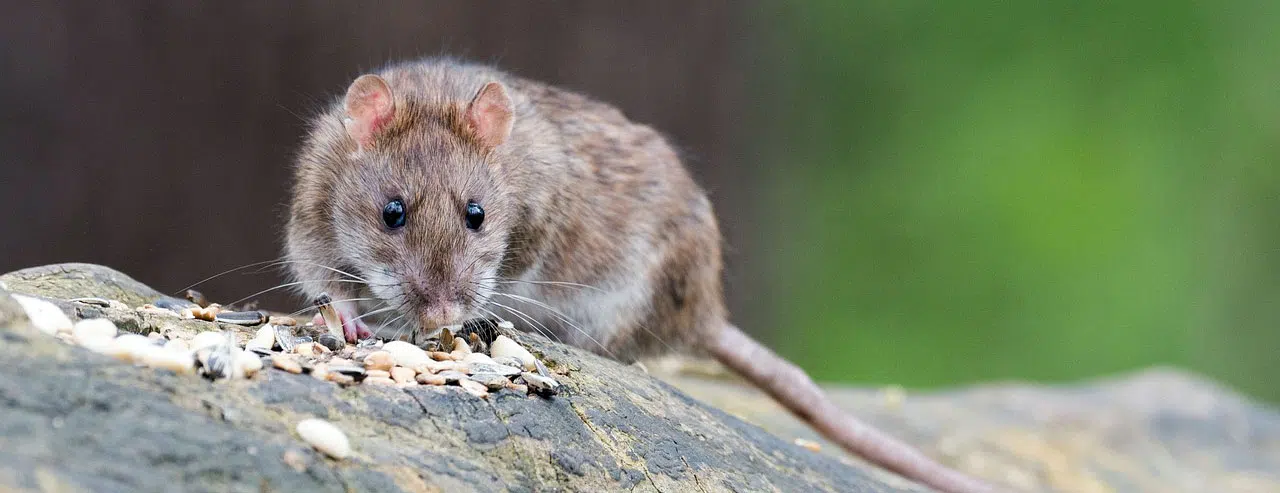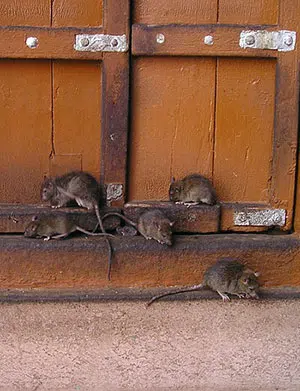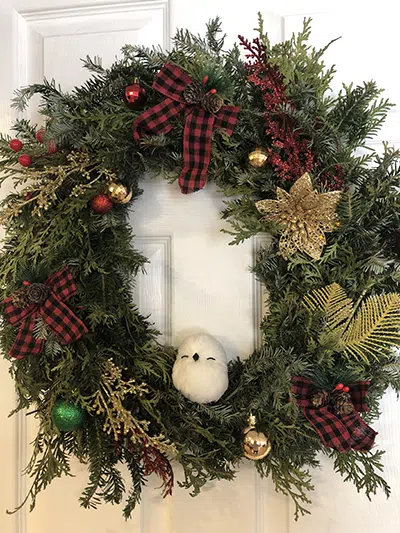When it comes to the decision on how to approach nuisance rats there are many factors to take into consideration. Trapping rats is a solution that can be used for both residential and commercial properties, whereas shooting rats can typically only be used in commercial settings and by those who are properly licensed, skilled, and trained for the task.

Some people also choose to use rodenticides, but this solution is not considered humane and heavily regulated. Rodenticides that are actually effective can only be used by professionals. In addition, depending on the type of commercial facility (i.e., anything food related), rodenticides may not be an option. Let's explore all available options in more detail.
Trapping Rats and Considerations When Choosing a Rat Trap
Location
When choosing a location for placing rat traps, several concerns and considerations are crucial to ensure effectiveness, safety, and minimal risk to non-target animals or humans. To successfully capture a rat, the key factor for placement is animal activity and behaviour. As a home-owner with a rat issue, it is likely you have observed locations with high rat activity including places with droppings and gnaw marks. Rats typically follow the same paths repeatedly so positioning traps along these paths will increase your chances of capture. In addition, rats are often drawn to food. Placing traps near food sources such as garbage and recycling can be an effective technique as well.
 Size and Type of Rats
Size and Type of Rats
In Ontario, the two most common types of rats are the Norway rat and the Roof rat. To the untrained eye it may be difficult to tell the difference between the two, and it isn’t one hundred percent necessary to identify the species of rat before setting traps. The Norway rat has a robust and stocky build with small ears, where the Roof rat has a more slender body with a pointed nose and large ears. The main consideration is setting appropriate traps for the size of rats you have seen.
Safety Considerations
Since many traps are designed to kill, it is crucial to take into consideration outside factors when setting rat traps. Ensure that traps are placed in areas that are inaccessible to children and pets. Accidental injury is possible especially with snap traps, electronic traps, and conibear traps as they can cause serious harm. If you must put a trap in a high traffic area, use trap covers or boxes that allow only rats to access the trap in order to reduce the risk of injuring non-target animals and people.
Types of Rat Traps
Rat traps are devices used to capture and kill rats. Rats are common pests in both homes and commercial properties. There are a variety of different rat traps that can be used to deal with rat infestations. But in terms of the best rat trap, each specific location and situation needs to be assessed in order to choose the best solution. But remember, it is important to know how to set a rat trap before ever attempting to use one.
Snap Traps
Snap traps are the best rat traps to use at home in terms of user friendliness. They are also considered to be the most traditional type of rat trap. Similar to a mouse trap, snap traps consist of a metal bar connected to a spring mechanism; just on a larger scale. The rat is drawn to the bait which causes the bar to snap down and kill the rat instantly. This is the most simple trap to use without professional assistance as it is easy to operate, reusable, and inexpensive. In terms of bait options, rats are not very picky when it comes to food. The best bait for rat traps include peanut butter, marshmallows, and cheese; but almost any bait will work if rats are highly prevalent in the area the trap is set. The main concern with snap traps is location. These traps must be placed in an area that is available to the rats, but secluded from other animals. Incorrectly placing one of these traps could lead to the death of a non-target animal.
Glue Traps
Glue traps consist of flat boards that are coated with a sticky adhesive. When a rat steps on the trap, it becomes stuck and cannot escape. Advantages of this type of trap include ease of use, disposability, and location variety; but there are also a large number of concerns when it comes to the use of glue traps. Glue traps are inhumane; a trapped rat often dies slowly from dehydration or starvation. Rats trapped on glue traps can also become bait for larger animals in the area. Another main concern with these traps is non-target animals being trapped and suffering from inhumane treatment, especially if the trap is placed in an area which many species frequent.
Electronic Traps
These traps look just like a black box to the untrained eye, but the inside contains electrical components that kill rats. When a rat enters the trap to reach the bait, an electrical circuit is completed which delivers a lethal shock to the rat. These traps are quick to set up and provide a humane approach to rat control. These traps are also reusable and provide for an easy disposal of the dead rat. Because the opening of these traps only allows for an animal of rat size or smaller to enter, these are a highly recommended trap for a novice trapper as the likelihood of unwanted kills is rare. Unlike glue traps and snap traps, these traps can run at a higher price point and do require batteries or a power source.
Live Traps
Live traps are used to capture rats without killing them. These are baited traps that lure the rats in and once they reach the food, the trap will close behind them, locking them inside. This type of trap is the most humane, as the rat can be released elsewhere. Unfortunately though, there are laws set out that rats can only be released within one kilometer of where they were trapped. It is also important to note that you cannot release these rats on another's private property. In addition, release may not be the most ideal option as rats are capable of traveling well over a kilometer in a day and may return to your property. If you have a rat trapped in a live trap and you’re not sure what to do, Hawkeye can help by humanely euthanizing the rodent for you.
Conibear Traps (For Professional Use Only)
Conibear traps, also known as body-gripping traps, are commonly used for trapping rats, and can even be used for larger wildlife. These traps are designed to deliver a quick, lethal strike, typically to the neck or spine of the animal, resulting in an almost instantaneous kill. Being the most durable type of trap, Conibear traps are reusable and therefore cost-effective over time. It is important to note that traps of this caliber require the possession of a trappers license to operate. All of our technicians at Hawkeye have a trappers license and can set and operate these traps on your behalf. Due to the danger and lethality of these traps, they are typically only used in areas where the target animal is guaranteed, such as inside of commercial buildings. It is important to keep in mind that these traps are lethal to non-target animals including pets, birds, or endangered species and also require skill and knowledge to set properly, therefore can only be used by professionals.
Shooting Rats and Factors to Consider
 Location
Location
Shooting rats in enclosed spaces, such as factories, poses significant risks. If the proper ammunition or technique is not used, pellets can ricochet off hard surfaces causing injury or damage to property. It is also important to consider product loss prevention and health concerns. Shooting rats in areas where contamination or loss of product can be avoided is ideal and will always be the goal.
Legality and Safety
Shooting rats, particularly with air rifles, can be an effective method of pest control, but specific legal and safety considerations are involved. The legality and safety of shooting rats varies depending on the jurisdiction and the type of air rifle used. In many regions there are strict regulations governing the discharge of firearms within residential areas, therefore this technique is only appropriate for commercial properties. In addition, high-powered air rifles do require a license and a vast amount of skill, therefore only professionals should attempt this technique. Since air rifles can be quite loud and produce a shocking sound that may frighten some, it is important to contact local authorities and inform them of your whereabouts and what you are doing before discharging any firearms. Always ensure you are compliant with local regulations and prioritize safety when engaging in this type of pest control.
When the firearm is actually discharged, there are also many safety concerns involved to ensure a successful hit, minimal to no damage to property, and no injury to yourself or others. Skilled gun operators will clear the area, use an appropriate firearm, shoot the rat in an appropriate location to avoid contamination, and understand distance and target accuracy.
Ammunition
The type of ammunition used when shooting rats in buildings is very important. Particularly with air rifles, ensuring that the pellet stays within the rat's body (rather than passing through) is important for several reasons, including safety, effectiveness, and humane concerns. The goal is to deliver a powerful enough shot to kill the rat quickly without over-penetration, which could cause the projectile to continue beyond the target and create risks. To ensure this technique it is best to use either hollow-point pellets or flat-head pellets. Hollow-point pellets are designed to expand upon impact which increases their stopping power and reduces the likelihood of the pellet exiting on the other side of the target. On the other hand, flat-head pellets also create resistance when entering the body, which can help prevent them from passing through and are known to cause more tissue damage upon impact. Choosing the proper ammunition will greatly impact property damage during this process.
Humane Considerations
When shooting rats, it is important to be as humane as possible. Targeting the chest of the rat tends to minimize suffering and ensures effective pest control. After a rat is shot, it must be checked immediately to ensure a successful kill. If the target is only wounded, a follow-up shot may be required to prevent suffering.
Factors to Consider when Using Rodenticide
Location
Rodenticides should be placed in areas where rodents are most active. This includes areas such as entry points, along walls, and near nesting and feeding areas. Ideal locations include attics, basements, crawl spaces, and the perimeter of buildings. It is essential to keep rodenticides away from water sources to avoid contamination. The use of rodenticides is most effective in commercial buildings as they can be placed by professionals which have access to more effective rodenticides than those available over the counter to the public.
Safety Considerations
Due to their toxic nature, safety is crucial when using rodenticides. These products pose risks to non-target animals, pets, children, and the environment. The use of rodenticides residentially is very risky and should be avoided at all costs. When using rodenticides, iIt is important to always use tamper-proof bait stations in order to prevent accidental ingestion. These bait stations must always be placed in areas which are inaccessible to non-target species. If placing bait stations by yourself, always be sure to follow the product’s label and instructions very carefully and ensure you are complying with all local regulations to ensure proper use. Additionally, regular monitoring and disposal of dead rodents is essential in order to minimize the risks of secondary poisoning which could lead to further environmental contamination. Implementing safety measures helps to protect both people and wildlife. It is also important to note that factories that produce food must follow specific standards set out by the American Institute of Baking (AIB) to minimize the use of toxic substances for the sake of food safety and the environment. The use of these products is also restricted in factories that produce medicine and medical supplies.
Types of Rodenticides
Rodenticides are chemical substances used to kill rodents and there are two main types of rodenticides; Anticoagulants and Non-Anticoagulants. There are also natural and low toxicity rodenticides that are more commonly used residentially but have proven to be less effective in terms of rat control. Rodenticides are not considered humane.
 Anticoagulants
Anticoagulants
Anticoagulants enter the bloodstream and interfere with a rodent’s ability to clot blood, causing internal bleeding and eventually death. There are two categories of anticoagulants; first-generation and second-generation. First-generation anticoagulants require the rodent to feed multiple times whereas second-generation anticoagulants are highly potent and lethal after one feeding. Even though anticoagulants have proven to be an effective form of rodent control, first-generation anticoagulants pose a high risk of secondary poisoning to non-target animals and pets by consumption of affected rodents. Since first-generation anticoagulants are the only type that can be used legally by home-owners, there are a lot of risks involved and should be used with caution or not at all. Commercially, only second-generation anticoagulants should be used by professionals to ensure faster results for rat control and minimal to no contamination. Examples of first-generation anticoagulants include warfarin, pindone, chlorophacinone, and diphacinone . Examples of second-generation anticoagulants include bromethalin and zinc phosphide
Non-Anticoagulants
Non-anticoagulant rodenticides work through various different mechanisms including the disruption of cellular metabolism and or nervous system function. For example, Bromethalin is a neurotoxin that affects the central nervous system, causing paralysis and death. Whereas Zinc Phosphide releases toxic phosphine gas into the stomach, also causing paralysis and death. Many non-anticoagulant rodenticides are available in formulations for consumer use but since they pose great risk to pets, wildlife, and humans if not used correctly they can be quite dangerous when not used by a professional. If any type of rodenticide is to be used residentially, Cholecalciferol is by far the safest to use as its mechanism of action is to cause a dangerous buildup of calcium in the bloodstream. This non-anticoagulant is effective as a single feed bait and poses the least amount of risk in terms of secondary poisoning. There are a variety of non-anticoagulants that are restricted to professional use only as they can be very harmful to non-target species. An example of a restricted non-anticoagulant is Strychnine which disrupts the nervous system by causing severe muscle convulsions and asphyxiation. Each of these non-anticoagulant rodenticides operates differently, but are all designed to kill rodents more quickly than anticoagulant rodenticides
Natural or Low-Toxicity Rodenticides
Natural rodenticides are definitely the most eco and residentially friendly options when it comes to rat control, but are oftentimes not as effective as the more toxic options. Risk over reward needs to be put into practice here as the use of the more toxic options done incorrectly can cause serious damage to non-target species and the environment. Each type of natural rodenticide works differently and has a varying level of toxicity and effectiveness. The two main types are corn gluten meal and sodium salt of fatty acids. Both options are intended to cause dehydration and eventually death over time.
Which Technique is most Effective to Get Rid of Rats?
When it comes to rat control, there are many viable options, but choosing the appropriate one for your situation can be difficult, especially when considering environmental concerns. Overall, trapping is the most effective method residentially and shooting is the most effective method commercially when rodenticides are not an option. Speaking to a wildlife professional at Hawkeye can help you to determine what the best solution for your problem is.
If you are having issues with rats and need professional assistance, contact Hawkeye today for any rat related concerns you may have. Providing safe, effective, and humane solutions to your rat control issue is our goal.















